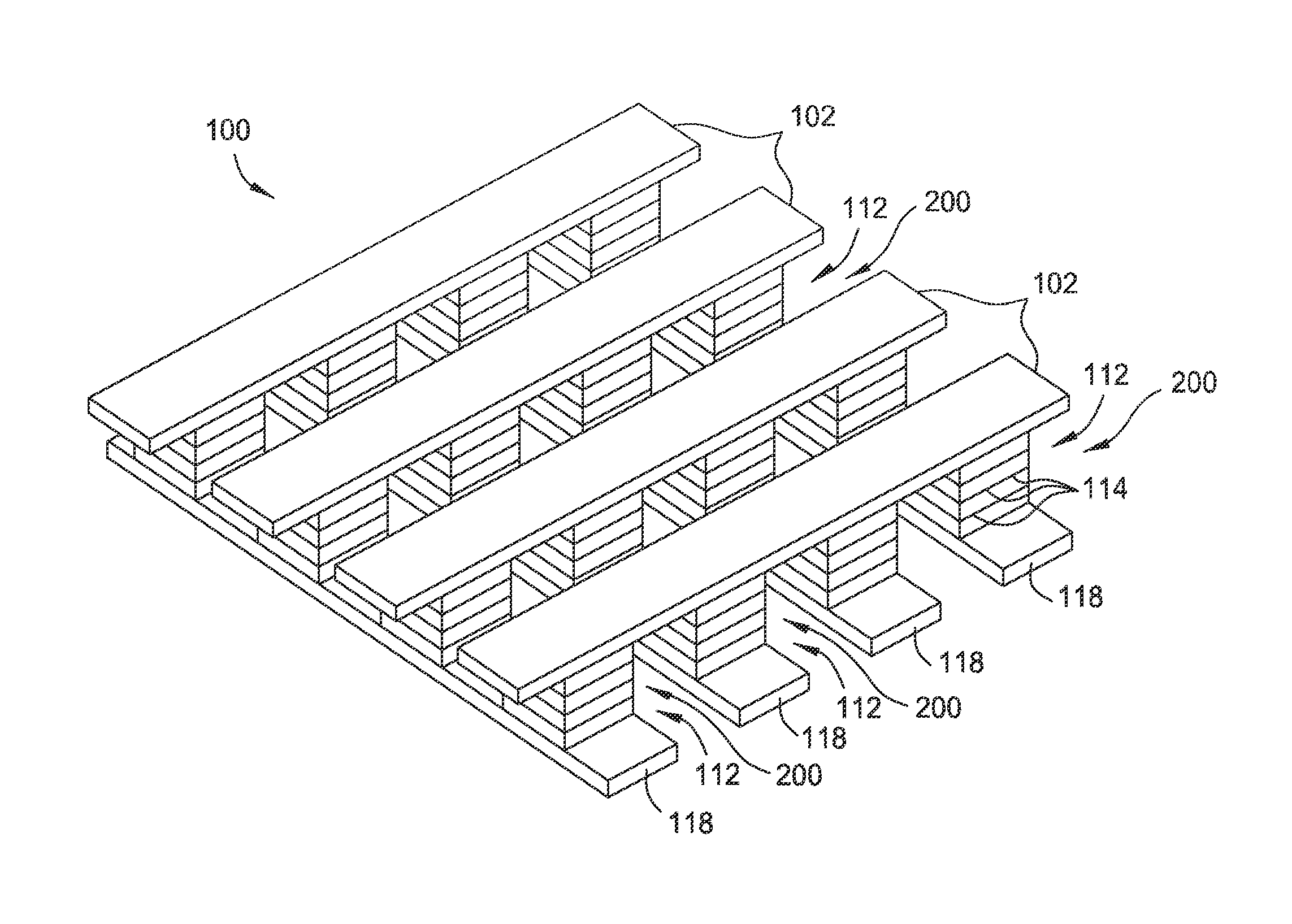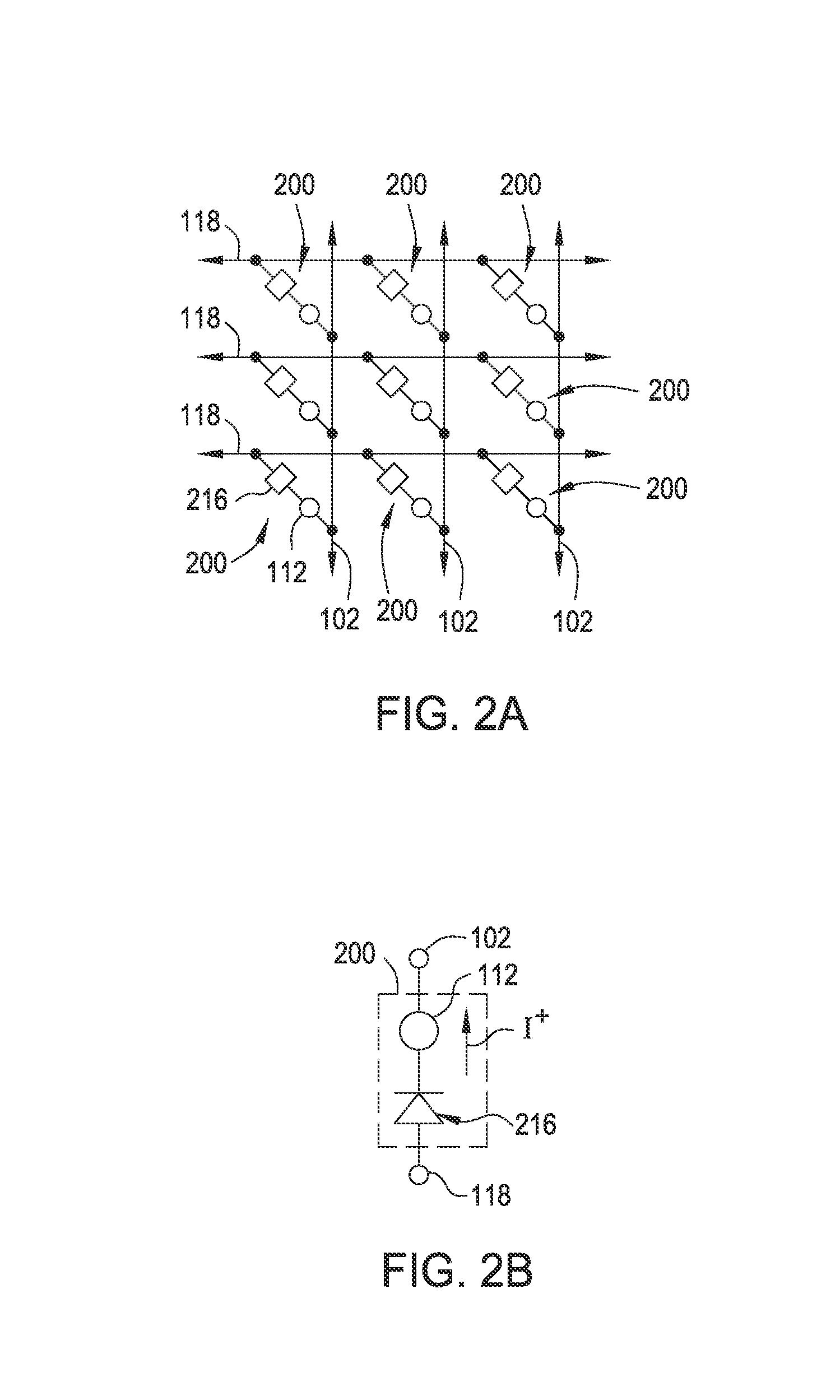Nonvolatile resistive memory element with an oxygen-gettering layer
a nonvolatile resistive memory element and oxygen-gettering technology, applied in information storage, static storage, digital storage, etc., can solve the problems of inability to reliably occur, inability to form, switch current, and forming voltage of traditional nonvolatile memory technology, and achieve more thermodynamically favorable oxygen gettering, the effect of increasing the thickness of the sio2 interfacial layer
- Summary
- Abstract
- Description
- Claims
- Application Information
AI Technical Summary
Benefits of technology
Problems solved by technology
Method used
Image
Examples
Embodiment Construction
[0021]Materials used as the switching layer of a nonvolatile resistive memory element are generally required to have bistable electrical switching properties and, ideally, can be operated with low switching current and formed with a minimal forming voltage. A nonvolatile memory element with a variable resistance layer and a novel oxygen-gettering layer, and methods of forming the same, are described. The novel variable resistance layer has bistable resistance properties and includes a high-K dielectric layer and a silicon dioxide (SiO2) interfacial layer. The novel oxygen-gettering layer includes an oxygen-gettering material that can prevent unwanted growth and / or reduce the thickness of the interfacial layer during fabrication of the memory element.
[0022]FIG. 1 is a perspective view of a memory array 100 of memory (elements) devices 200. Memory array 100 may be part of a larger memory device or other integrated circuit structure, such as a system-on-a-chip type device. Memory array...
PUM
 Login to View More
Login to View More Abstract
Description
Claims
Application Information
 Login to View More
Login to View More - R&D
- Intellectual Property
- Life Sciences
- Materials
- Tech Scout
- Unparalleled Data Quality
- Higher Quality Content
- 60% Fewer Hallucinations
Browse by: Latest US Patents, China's latest patents, Technical Efficacy Thesaurus, Application Domain, Technology Topic, Popular Technical Reports.
© 2025 PatSnap. All rights reserved.Legal|Privacy policy|Modern Slavery Act Transparency Statement|Sitemap|About US| Contact US: help@patsnap.com



